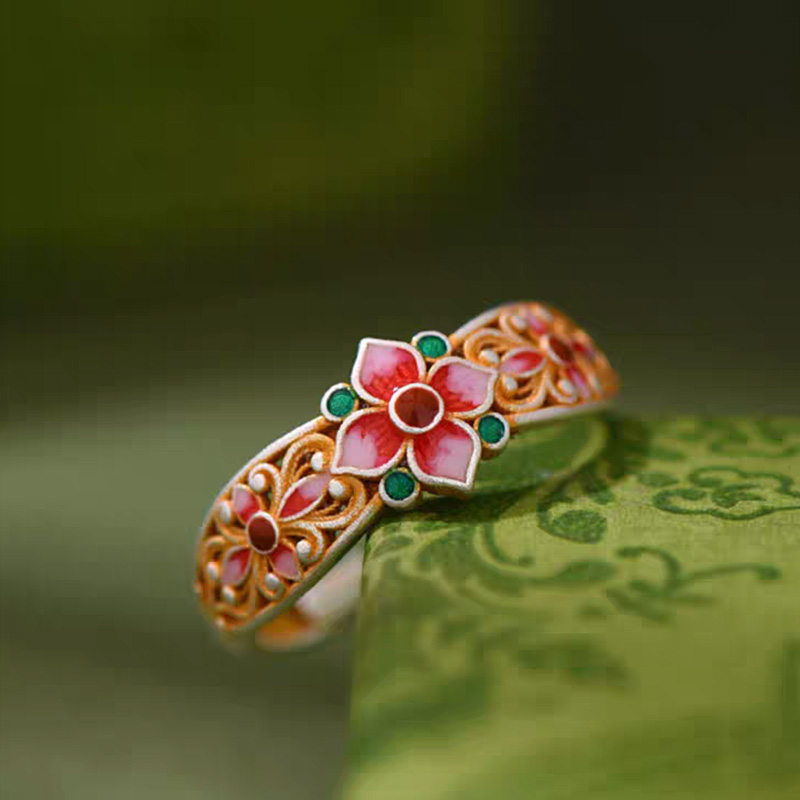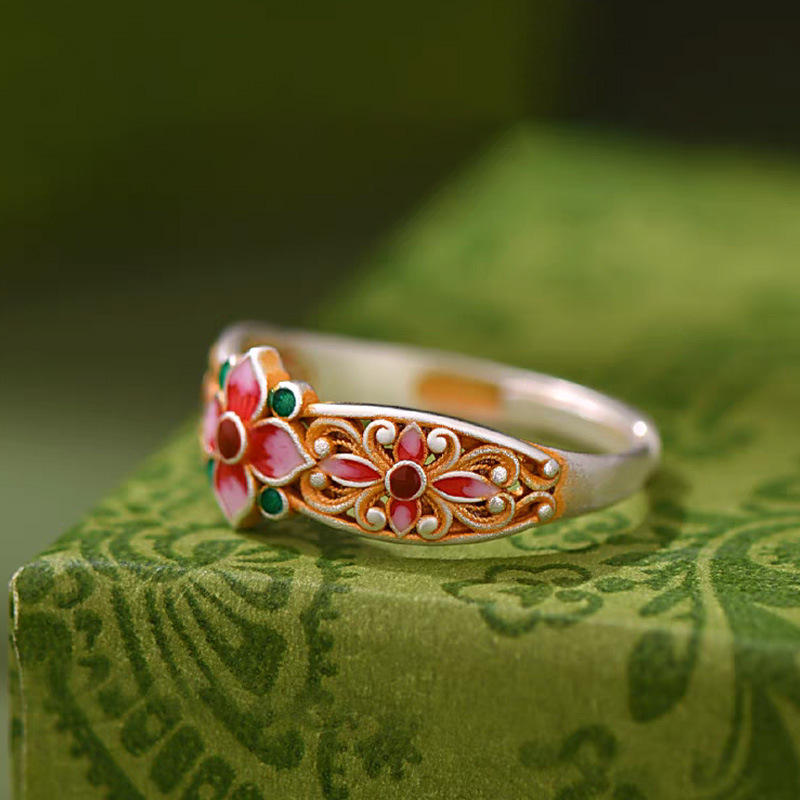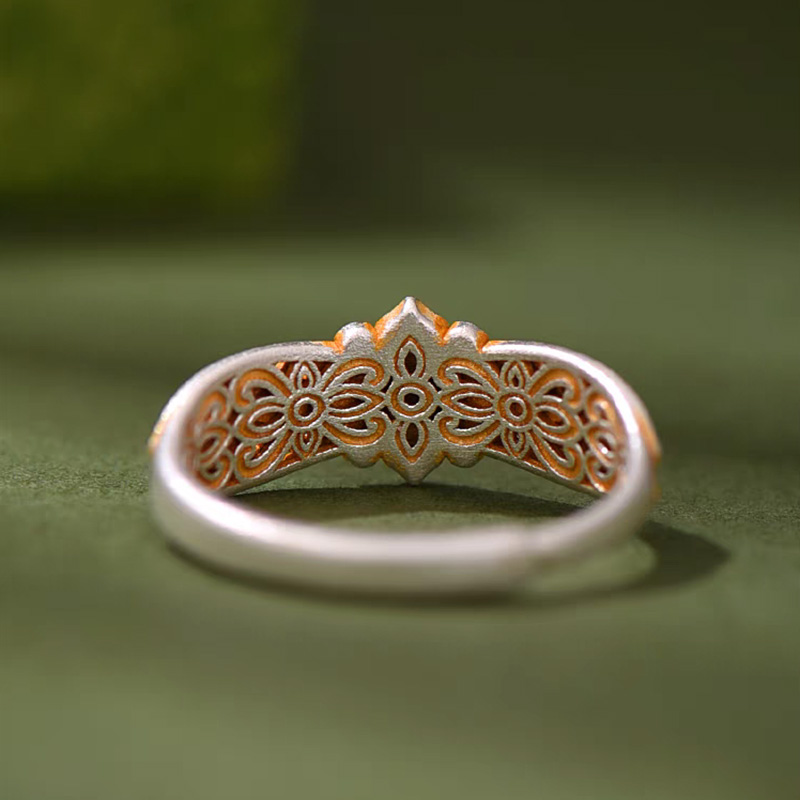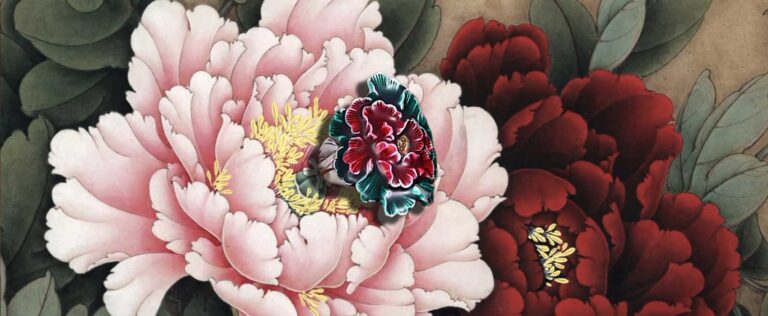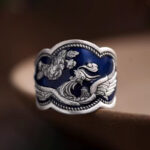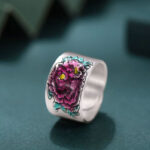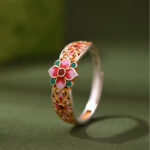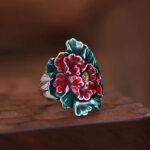Baoxiang Flower The Timeless Beauty of a Chinese Floral Motif
In traditional Chinese art, floral patterns are more than mere decoration; they carry profound cultural symbolism and convey heartfelt wishes. Among these traditional flowers, one motif stands out for its sacredness, magnificence, and auspicious meaning, shining brightly across millennia – the Baoxiang Flower.
I. What is Baoxiang Flower?
Baoxiang Flower is not a specific flower found in nature but an idealized artistic bloom that combines the beauty of many flowers. Its history dates back to the Wei, Jin, and Northern and Southern dynasties. With the widespread dissemination of Buddhism, Buddhist art laid an important foundation for the birth of Baoxiang Flower. Its early form is closely related to the lotus, a symbol of purity and sanctity in Buddhism.
Baoxiang Flower typically features symmetrical structure, layered and complex petals arranged in an orderly fashion. The overall shape is mostly based on the lotus, incorporating elements from peony, hibiscus, camellia, and other flowers, creating a visual effect that is rich, dignified, and full of sacred aura. Because of this, Baoxiang Flower is often called the “Buddha Flower” or “Sacred Flower.”
II. Baoxiang Flower in History: From Temples to Palaces
Baoxiang Flower has been widely applied in religious architecture, imperial artifacts, textile patterns, and precious metal and jade carvings, becoming an important element in the art of the Tang, Song, Yuan, Ming, and Qing dynasties.
• Tang Dynasty: A Period of Multicultural Fusion and Flourishing Development
The Tang Dynasty marked the heyday of Baoxiang Flower, absorbing artistic styles from Central Asia and India. Through multicultural exchanges, it developed a unique style. Based on the lotus, it integrates elements of peony, pomegranate, chrysanthemum, and other flowers. The layered petals and symmetrical design symbolize wealth, auspiciousness, and spiritual completeness.
• Song Dynasty: Delicate Elegance and Literati Aesthetics
During the Song Dynasty, Baoxiang Flower became more delicate and refined on the basis of the Tang style, emphasizing rhythmic lines and symmetrical shapes. It reflected the literati’s pursuit of harmony and beauty, commonly seen in porcelain, lacquerware, and brocade.
• Ming and Qing Dynasties: A Blend of Decoration and Practicality
In the Ming and Qing periods, Baoxiang Flower patterns stressed both decorative appeal and practicality, incorporating more freehand and ornamental elements. They were often found on official robes, dragon robes, carpets, embroidery, and royal ceremonial objects, symbolizing nobility and enduring blessings.
III. Cultural Significance of Baoxiang Flower
As one of the traditional auspicious patterns, Baoxiang Flower represents more than visual beauty; it embodies cultural aspirations:
• Wealth and Auspiciousness: Combining the grandeur of the peony with the purity of the lotus, symbolizing a fulfilled life and longevity.
• Buddha’s Radiance: Rooted in Buddhist background, representing wisdom, purification, and inner cultivation.
• Harmony and Beauty: Symmetrical and abundant floral clusters symbolize the harmony of heaven, earth, and all living things.
Therefore, whether used in home decor, festive clothing, or everyday wear, Baoxiang Flower conveys people’s blessings and spiritual sustenance.
IV. Baoxiang Flower Ring: A Contemporary Expression of a Cultural Symbol
The Baoxiang Flower ring draws inspiration from the lotus’s purity and enlightenment, blending the peony’s grandeur and completeness. The layered petals symbolize the journey of life, full of ups and downs yet also peace.
Wearing this ring is like carrying a personal talisman that reminds you to maintain inner calm and strength, revealing order and beauty amidst complexity. Whether facing challenges or welcoming new opportunities, the Baoxiang Flower ring accompanies you, imparting auspiciousness, peace, and hope.
With this ring, you can:
✅Embrace inner tranquility and harmony
✅Inspire auspiciousness and prosperity in life
✅Let ancient cultural strength be your steadfast support
This is more than just a ring; it is a legacy spanning time, a blessing connecting past and future. Learn more
V. Epilogue: A Millennium of Blossoming, Endless Legacy
Baoxiang Flower is the crystallization of craftsmen’s wisdom, a symbol of Chinese aesthetics, and a window for us to converse with tradition. Every petal is a whisper of millennia-old culture; every gaze, a silent vow for a better life.
In today’s noisy world, may we all draw from Baoxiang Flower’s tranquility and solemnity a measure of inner peace and auspiciousness. May this ancient cultural power continue to shine in our lives, blossoming for a thousand years and never fading.



